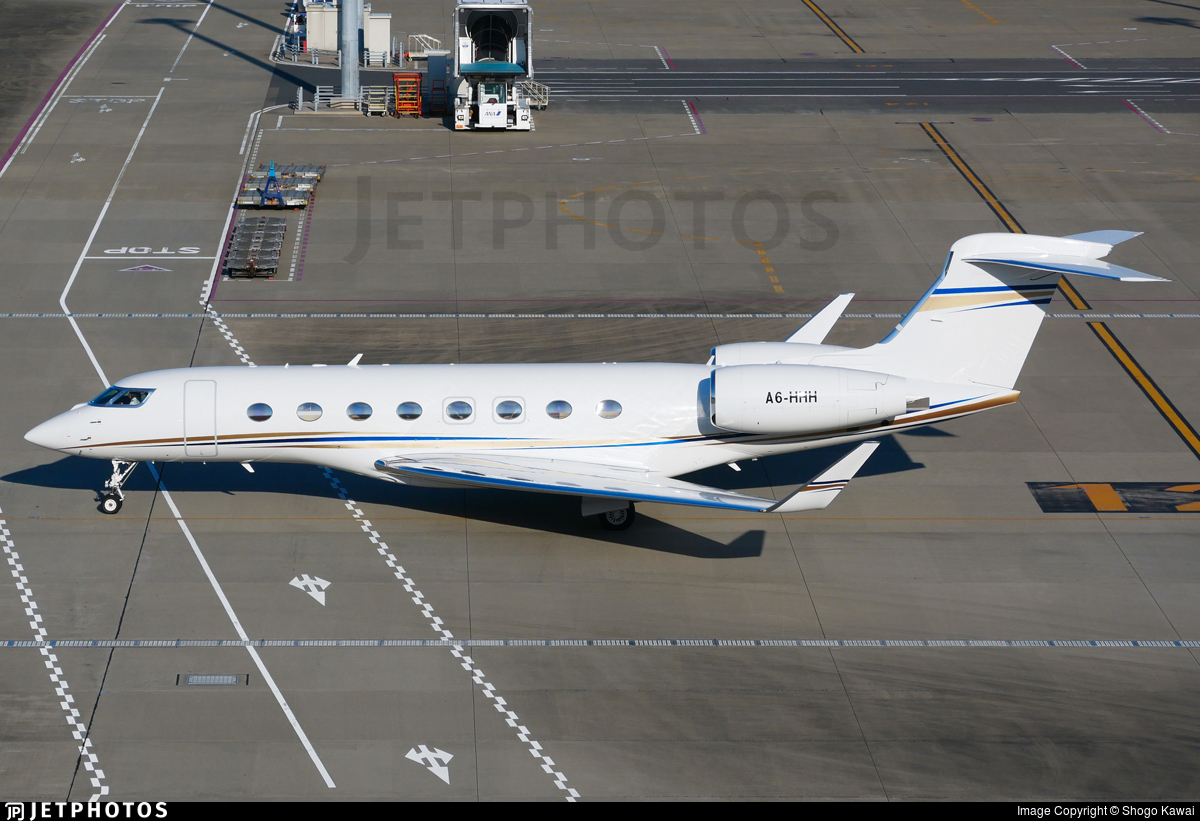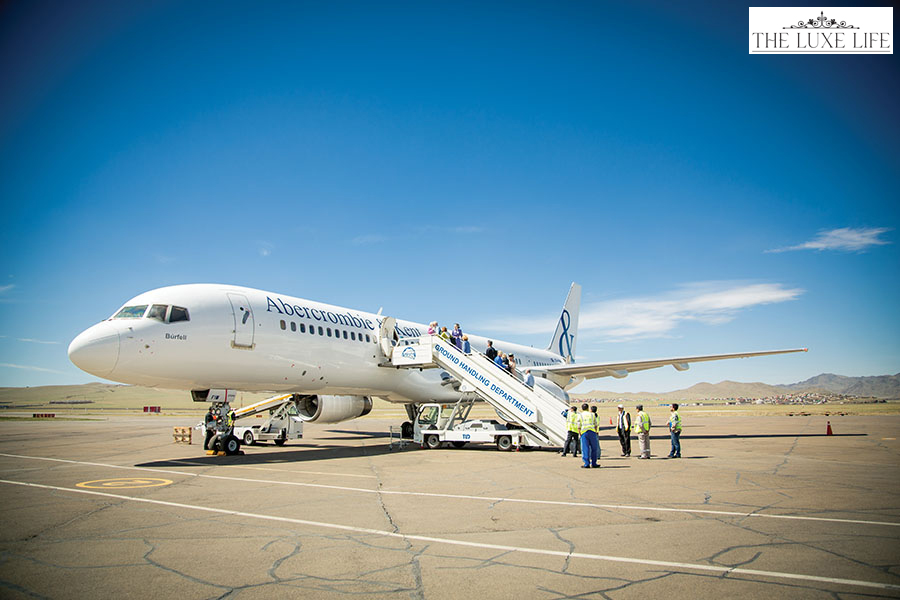Private aircraft for medical evacuation play a crucial role in ensuring timely and efficient healthcare services in the UAE. With the increasing demand for emergency medical transfers, private jet charters have become an invaluable asset for medical professionals and patients alike. These specialized aircraft are equipped with state-of-the-art medical equipment and staffed by highly trained medical personnel, ensuring that patients receive the highest level of care during transportation. In this article, we will explore the benefits and advantages of utilizing private aircraft for medical evacuation in the UAE, and how they are revolutionizing the way emergency healthcare is delivered.

This image is property of images.unsplash.com.
1. Private Aircraft for Medical Evacuation
1.1 The Importance of Medical Evacuation
Medical evacuation plays a critical role in ensuring the timely transportation of patients who require advanced medical care. In emergency situations where immediate treatment is required or when the local healthcare facilities are inadequate, medical evacuation can be a life-saving option. The swift transfer of patients to appropriate medical facilities can significantly improve their chances of survival and recovery.
1.2 The Role of Private Aircraft
Private aircraft have emerged as a crucial means of transportation for medical evacuation purposes. These aircraft offer numerous advantages over commercial flights, such as enhanced flexibility, speed, and convenience. By utilizing private aircraft, medical evacuation providers can overcome the limitations of scheduled airline services and transport patients to their destinations more efficiently.
1.3 Advantages of Using Private Aircraft for Medical Evacuation
Private aircraft offer several key advantages for medical evacuation purposes. Firstly, they can quickly reach remote locations or hospitals that may not be easily accessible by commercial airlines. This is especially important in emergency cases where time is of the essence. Private aircraft also provide a smoother and more comfortable journey for patients, allowing them to be transported in a controlled environment without the congestion and potential exposure to infectious diseases often associated with commercial flights.
Furthermore, private aircraft offer greater flexibility in terms of scheduling. They can be deployed on short notice and are not bound by rigid airline schedules, allowing medical evacuation providers to respond swiftly to emergencies. Private aircraft also provide ample space for medical equipment and supplies, as well as specialized medical personnel, ensuring that patients receive the necessary care during transit.
2. Requirements for Medical Evacuation
2.1 Medical Certification and Documentation
Before undertaking a medical evacuation, it is crucial to ensure that the patient’s medical condition is assessed by qualified medical professionals. Medical certification and documentation play a vital role in determining the suitability of the patient for air transportation. These documents provide essential information regarding the patient’s medical history, current condition, and any specific requirements or precautions that need to be taken during the evacuation process.
2.2 Medical Supplies and Equipment
Medical evacuations necessitate the availability of appropriate medical supplies and equipment onboard the aircraft. This includes items such as emergency medications, oxygen tanks, cardiac monitors, and stretchers. It is essential to ensure that the medical equipment is in good working condition and is properly maintained and serviced. Adequate supplies must also be stocked to cater to any potential medical emergencies that may arise during transit.
2.3 Professional Medical Staff
A critical aspect of a successful medical evacuation is the presence of qualified medical personnel onboard the aircraft. These medical professionals, such as doctors, nurses, and paramedics, should possess the necessary skills and experience to handle medical emergencies and provide the required care during the journey. Their presence ensures that patients receive the appropriate medical attention, monitoring, and support throughout the evacuation process.
2.4 Patient’s Condition and Compatibility
The suitability of a patient for a medical evacuation via private aircraft depends on their medical condition and compatibility with the aircraft’s capabilities. Certain medical conditions may require specific accommodations or equipment, such as isolation units or specialized life support systems. It is essential to carefully assess each patient’s condition to determine if their medical needs can be adequately met during the evacuation.

This image is property of images.unsplash.com.
3. Choosing the Right Private Aircraft for Medical Evacuation
3.1 Range and Speed
When selecting a private aircraft for medical evacuation, it is crucial to consider its range and speed capabilities. The aircraft should have the ability to reach the desired destination within the required timeframe, especially in emergency cases. Longer range aircraft can cover greater distances without the need for refueling stops, offering a seamless and efficient journey for the patient.
3.2 Cabin Layout and Size
The cabin layout and size of the private aircraft are significant factors in ensuring the comfort and safety of the patient during the evacuation. The cabin should be spacious enough to accommodate the medical personnel and equipment without any compromises on patient comfort. Additionally, the aircraft should have adequate storage space for medical supplies and equipment, allowing for easy access during the flight.
3.3 Medical Facilities Onboard
Private aircraft suitable for medical evacuation should ideally be equipped with medical facilities that can cater to the patient’s needs. This can range from basic medical equipment such as first aid kits and oxygen masks to more advanced equipment like defibrillators and ventilators. The availability of these facilities onboard ensures that the patient’s medical condition can be adequately managed during the journey.
3.4 Accessibility and Ease of Transfer
The private aircraft chosen for medical evacuation should have proper accessibility features to facilitate the smooth transfer of the patient onto the aircraft. This includes features such as stretchers, ramps, and lifts to assist in the safe and efficient transfer of patients, especially those with mobility issues. Easy access to the aircraft ensures the comfort and safety of the patient and minimizes any potential complications during the evacuation process.
4. Private Aircraft Providers in the UAE
4.1 Business Jet Charter Companies
In the UAE, several business jet charter companies offer private aircraft for medical evacuation purposes. These companies specialize in providing flexible and efficient air transportation solutions, ensuring swift and reliable medical evacuations for patients. They cater to various medical needs and can customize their services according to specific patient requirements.
4.2 Expertise in Medical Evacuation
When choosing a private aircraft provider for medical evacuation in the UAE, it is essential to consider their expertise in the field. Providers with extensive experience in medical evacuation operations are better equipped to handle the complexities and challenges that may arise during the process. Their knowledge and expertise contribute to the smooth execution of evacuation missions, ensuring the safety and well-being of the patients.
4.3 Fleet Diversity and Availability
The availability of a diverse fleet of private aircraft is crucial in selecting the right provider for medical evacuation. Different medical conditions require varying levels of medical support and accommodation. Having access to a wide range of aircraft ensures that the patient can be transported in the most suitable aircraft for their specific medical requirements. Additionally, the availability of aircraft at short notice is vital in emergency situations when time is of the essence.
4.4 Reputation and Reviews
A reputable private aircraft provider should have a strong track record in providing reliable and high-quality medical evacuation services. Checking for customer reviews and testimonials can provide valuable insights into the provider’s reputation and the level of satisfaction among previous clients. It is essential to choose a provider with a proven track record of successfully executing medical evacuation missions, ensuring the highest level of safety and service.

This image is property of images.unsplash.com.
5. The Process of Medical Evacuation
5.1 Assessing the Medical Needs
The first step in the process of medical evacuation is to assess the patient’s medical needs. This involves a thorough examination by qualified medical professionals to determine the necessary medical equipment, supplies, and level of medical expertise required during the journey. The assessment ensures that the patient’s specific medical needs are accounted for, and the appropriate arrangements are made for their safe transportation.
5.2 Planning and Coordination
Once the medical needs have been assessed, the next step is to plan and coordinate the medical evacuation. This involves liaising with the private aircraft provider, medical personnel, ground transportation services, and receiving medical facilities to ensure a smooth and seamless transfer. Proper coordination is crucial to ensure that all aspects of the evacuation process are well-organized and aligned with the patient’s medical needs and preferences.
5.3 Ground Transportation and Airport Assistance
Ground transportation plays a vital role in the medical evacuation process. Coordinating ground transportation from the patient’s location to the airport, and from the destination airport to the receiving medical facility, ensures a seamless transition throughout the journey. Private aircraft providers often assist in arranging ground transportation and provide necessary airport assistance to ensure the patient’s comfort and safety.
5.4 In-flight Medical Care
During the flight, qualified medical personnel provide the necessary medical care and support to the patient. They monitor the patient’s vital signs, administer medications if necessary, and provide emergency medical assistance if any complications arise. The equipment and supplies onboard the aircraft are readily available for immediate use, ensuring that the patient’s medical needs are promptly addressed throughout the journey.
5.5 Destination Arrangements
Upon arrival at the destination airport, the private aircraft provider coordinates with the receiving medical facility to ensure a seamless transfer of the patient. Ground transportation is arranged to transport the patient from the airport to the medical facility, taking into account any specific requirements or accommodations needed. This ensures that the patient is safely transferred to the receiving medical facility, where they can continue to receive the necessary treatment and care.
6. Cost Considerations
6.1 Factors Affecting the Cost
When considering the cost of medical evacuation via private aircraft, several factors come into play. These include the distance to be covered, the duration of the flight, the size of the aircraft, and the level of medical support required. Longer flights and larger aircraft with advanced medical facilities generally incur higher costs. Additionally, factors such as ground transportation, airport assistance, and the expertise of the medical staff can also impact the overall cost of the evacuation.
6.2 Transparency and Overhead
It is essential to select a private aircraft provider that offers transparency in their pricing and ensures there are no hidden costs or surprises. A reputable provider will provide a detailed breakdown of the costs involved in the medical evacuation and explain any additional fees or charges that may apply. Understanding the overhead costs and the breakdown of the expenses allows for better financial planning and decision-making.
6.3 Insurance Coverage
Insurance coverage plays a crucial role in mitigating the cost burden of medical evacuation. It is imperative to check whether the patient’s insurance policy covers medical evacuations and what expenses are eligible for reimbursement. Private aircraft providers may also offer insurance options specifically tailored for medical evacuations, providing additional peace of mind for patients and their families.
7. Safety and Regulations
7.1 Compliance with Aviation Standards
Safety is a paramount concern when it comes to medical evacuation via private aircraft. Reputable providers ensure strict compliance with aviation safety standards and regulations. The aircraft undergo regular maintenance and safety checks to ensure their airworthiness. Additionally, the crew members, including the pilots and medical personnel, undergo rigorous training to meet the highest safety standards.
7.2 Accreditation and Certification
Private aircraft providers specializing in medical evacuation often hold relevant accreditations and certifications. Accrediting bodies, such as the European Aeromedical Institute (EURAMI) and the International Assistance Group (IAG), provide certifications that recognize excellence in medical evacuation services. It is important to choose a provider that holds such accreditations, as this demonstrates their adherence to industry best practices and commitment to quality and safety.
7.3 Quality Control Measures
Medical evacuation providers employ various quality control measures to ensure the highest level of service and safety. These may include regular audits, continuous staff training, and adherence to standard operating procedures. By implementing stringent quality control measures, providers can identify and rectify any potential issues, ensuring that each medical evacuation is executed flawlessly and in accordance with industry standards.
8. Case Studies: Successful Medical Evacuation
8.1 Case Study 1: Emergency Medical Evacuation
In a recent emergency medical evacuation case, a patient in a remote location required immediate transfer to a specialized medical facility. A private aircraft was swiftly deployed, equipped with the necessary medical facilities and staffed with a team of highly trained medical professionals. The patient was safely transported to the receiving facility, where they received the urgent medical care required. The efficient response and dedication of the medical evacuation team played a crucial role in ensuring the patient’s well-being.
8.2 Case Study 2: Scheduled Medical Transfer
In another case, a patient required scheduled medical transfer between two medical facilities. The private aircraft provider carefully coordinated the transportation, ensuring that the patient’s medical needs were fully addressed throughout the journey. The medical staff onboard provided continuous monitoring and support, ensuring a comfortable and safe transfer for the patient. The timely and organized execution of the medical transfer contributed to a seamless transition for the patient and their medical care.
9. Conclusion
9.1 Private Aircraft for Swift and Reliable Medical Evacuation
Private aircraft have revolutionized the field of medical evacuation, offering swift and reliable transportation for patients in need of urgent medical care. The advantages of using private aircraft, such as speed, flexibility, and enhanced medical facilities, make them the preferred choice for medical evacuation providers. With the right private aircraft, qualified medical staff, and proper planning and coordination, medical evacuations can be executed seamlessly, ensuring the highest level of safety and care for the patients.
9.2 The Future of Medical Evacuation in the UAE
As the demand for medical evacuation services continues to grow, the future of private aircraft for medical evacuation in the UAE looks promising. The advancements in technology, improved air travel infrastructure, and the commitment of private aircraft providers to safety and quality assurance are significant factors contributing to the development of this industry. With an unwavering focus on patient care and continuous innovation, private aircraft are poised to play a critical role in the future of medical evacuation in the UAE.



